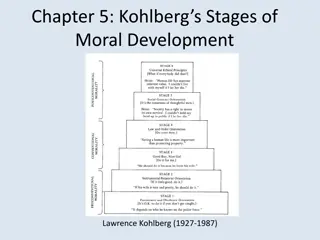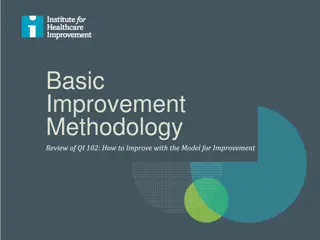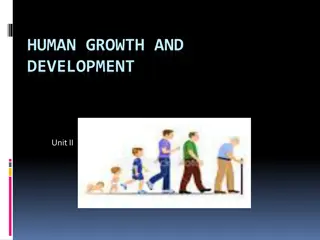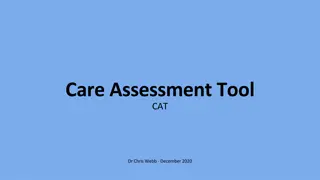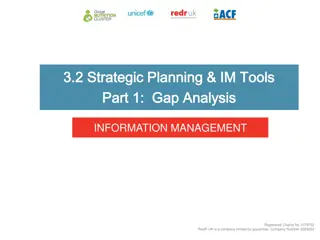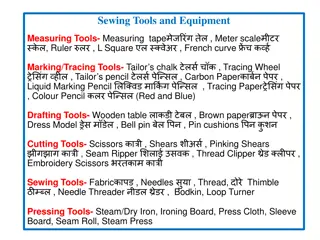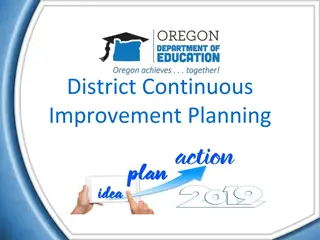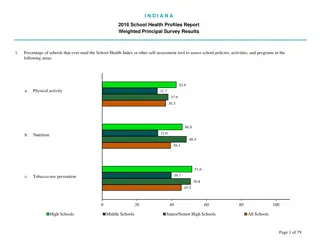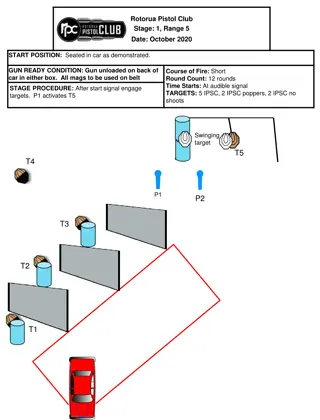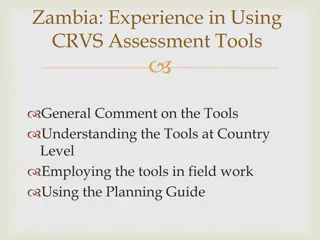Comprehensive Guide to Improvement Planning Stages and Tools
Explore the key stages of improvement planning, including self-assessment, performance evaluation, documentation, measurement, and planning. Learn about different tools for prioritizing, problem understanding, analysis, idea generation, and implementation to enhance organizational effectiveness. Dive into techniques like brainstorming, cause-and-effect analysis, and scatter charts for impactful improvement initiatives.
Download Presentation

Please find below an Image/Link to download the presentation.
The content on the website is provided AS IS for your information and personal use only. It may not be sold, licensed, or shared on other websites without obtaining consent from the author. Download presentation by click this link. If you encounter any issues during the download, it is possible that the publisher has removed the file from their server.
E N D
Presentation Transcript
IMPROVEMENT PLANNING
Outline Self assessment & Performance Evaluation Process Documentation Performance Measurement Improvement Planning Improvement Penggolongan Alat Improvement Tujuan Tools Persyaratan Perubahan Persyaratan sumber daya dan waktu Sumber improvement impulses Metode Organisasional
Improvement stages 1. Prioritizing the Improvement effort/Usaha 2. Process and problem understanding 3. Problem analysis 4. Idea generation 5. Improvement task/tugas generation 6. Implementation
1. Tools for prioritizing Self assessment/penilaian Trend analysis Spider chart Performance/Kinerja matrix Criteria testing (tidak dibahas) QFD (tidak dibahas)
2. Tools for process and problem understanding Relationship mapping (sudah dibahas pada fase 1) Flowchart (sudah dibahas pada fase 1) Critical incident: technique for identifying problems within an area or process Check sheet: used for collecting data about a process or problem area (7 traditional tools) Pareto chart: to sort problems or causes according to importance (7 traditional tools)
3. Tools for problem analysis Cause-and-effect: to identify causes to a problem (7 traditional tools) Root cause analysis: also termed why-why chart Scatter chart: used to see the connections between phenomena (7 traditional tools) Histogram: to sort data about a process in a clear manner (7 traditional tools) Relations diagram: to help find links between effects and probable cause for these Matrix diagram: to graphically portray data and see connections and relations
4.Tools for idea generation Brainstorming: the most basic technique to create as many idea as possible Brainwriting/Crawford slip method: close to a written version of brainstorming Nominal group technique: a more formalized way of generating ideas Affinity chart: organize thoughts or ideas
5. Tools for improvement Streamlining: tools for simplifying business processes, eliminating waste and increasing the efficiency Idealizing: to find the ideal process when disregarding practical limitations QFD: combined with a system diagram to design products or processes based in customer requirements Work unit analysis: to analyze customer/supplier relationship between segments of a business process to improve the interface Statistical process control and control chart (7 traditional tools) Business process re-engineering Benchmarking: to create improvements through learning from other organization
6. Tools for planning improvement implementation~Q Tree diagram: used for planning a project (7 new tool) Process decision program chart: used to prevent undesirable events from occurring (7 new tool) A T analysis: used to set ambitious targets for the improvement activity Force field analysis: to identify forces working for and against an implementation of improvements
TERIMAKASIH WASSALAMUALAIKUM WR WB

 undefined
undefined




























